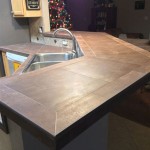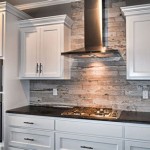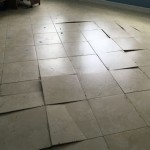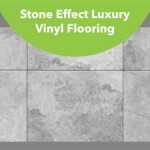Exploring The Arizona Tile Slab Yards: A Comprehensive Guide
Arizona Tile slab yards represent a significant resource for homeowners, designers, contractors, and builders seeking high-quality natural stone, quartz, and other surfacing materials. These expansive facilities provide a tangible and immersive experience, allowing customers to physically examine and select the perfect slabs for their projects. Understanding the layout, offerings, and best practices for navigating these yards is crucial for a successful selection process.
The sheer scale of an Arizona Tile slab yard can be initially overwhelming. These yards typically house hundreds, if not thousands, of slabs, ranging in size, color, veining, and material composition. The organization and presentation of these materials are carefully considered to facilitate efficient browsing and selection. Proper preparation and a clear understanding of the available resources are essential for maximizing the benefits of a visit.
This article will explore the key aspects of Arizona Tile slab yards, providing a detailed overview of what to expect, how to prepare for a visit, the range of materials available, and strategies for making informed decisions. The intention is to equip individuals with the knowledge necessary to confidently navigate these facilities and select the ideal slabs for their specific needs.
Understanding the Layout and Organization
Arizona Tile slab yards prioritize efficient organization to accommodate the vast inventory. Typically, slabs are grouped according to material type, color, and veining patterns. Granite slabs, for instance, will be grouped together, followed by quartz, marble, and other materials. Within each material category, further segregation based on color families allows for easier comparison and selection.
Individual slabs are clearly labeled with important information, including the material name, origin, dimensions, and any unique characteristics. These labels are crucial for accurate identification and ensuring that the selected slabs meet project specifications. It is important to carefully read and understand the information provided on each label before making a decision.
Many Arizona Tile locations utilize a system of visible numbering or lettering to identify specific slabs within a bundle. This is particularly important when selecting multiple slabs for a single project, as it allows for consistent tracking and ensures that all pieces originate from the same block, maintaining uniformity in color and veining.
Furthermore, the yards often feature dedicated areas for specific material types or special collections. These areas may showcase unique patterns, rare materials, or exclusive offerings. Exploring these designated zones can uncover unexpected options and inspire new design possibilities.
To enhance the selection process, Arizona Tile provides access to knowledgeable staff who can guide customers through the yard, answer questions, and offer expert advice. These professionals possess in-depth knowledge of the materials and can assist in identifying suitable options based on project requirements and design preferences. Utilizing their expertise can significantly streamline the selection process and ensure a satisfactory outcome.
Preparing for Your Visit: A Strategic Approach
Effective preparation is paramount for a successful visit to an Arizona Tile slab yard. Before embarking on the selection process, it is essential to define the project scope, budget, and design aesthetic. This pre-planning stage will help narrow down the options and focus the search efforts.
Bringing samples of existing materials, such as cabinet finishes, flooring, and paint colors, is highly recommended. These samples serve as critical reference points, allowing for accurate color matching and ensuring that the selected slabs complement the overall design scheme. Consider taking photographs of the space where the slabs will be installed to better visualize the final result.
Accurate measurements are also crucial. Knowing the required dimensions for countertops, vanities, or other surfaces will help determine the number of slabs needed and minimize waste. It is advisable to consult with a contractor or fabricator to obtain precise measurements before the visit.
Setting a budget is essential to stay within financial constraints. Slab prices can vary significantly based on material type, rarity, and quality. Establishing a maximum price per square foot will help narrow down the options and prevent overspending. It is important to factor in additional costs, such as fabrication, installation, and sealing.
Finally, scheduling an appointment with an Arizona Tile representative is highly recommended. This ensures that dedicated assistance is available to answer questions, provide guidance, and facilitate the selection process. Appointments also allow for personalized attention and a more focused experience.
Navigating the Material Selection: Options and Considerations
Arizona Tile slab yards offer a diverse range of materials, each with its unique characteristics and applications. Granite, quartz, marble, limestone, travertine, and onyx are among the most common options, catering to a wide spectrum of design preferences and functional requirements.
Granite is a popular choice for its durability, heat resistance, and natural beauty. It is available in a vast array of colors and patterns, making it suitable for both traditional and contemporary designs. Granite is particularly well-suited for high-traffic areas and applications that require superior stain resistance.
Quartz, an engineered stone, offers a consistent appearance and exceptional durability. It is non-porous, making it resistant to staining and bacterial growth. Quartz is available in a wide range of colors and patterns, including options that mimic natural stone. It is an excellent choice for kitchens, bathrooms, and other areas where hygiene is a priority.
Marble is renowned for its luxurious appearance and timeless elegance. It features distinctive veining patterns and a soft, sophisticated aesthetic. While marble is less durable than granite or quartz, it is often preferred for its inherent beauty and unique character. It is commonly used for countertops, vanities, and decorative applications.
Limestone and travertine are natural stones that offer a rustic and earthy appeal. They are often used for flooring, wall cladding, and outdoor applications. These materials require sealing to protect them from staining and water damage, but their natural beauty and unique texture make them a popular choice for creating warm and inviting spaces.
Onyx is a translucent stone that offers a dramatic and luxurious aesthetic. It is often used for accent walls, lighting features, and decorative elements. Onyx is relatively soft and porous, requiring careful handling and maintenance. However, its unique beauty and ability to transmit light make it a stunning choice for creating a focal point.
When selecting materials, it is crucial to consider the intended application, traffic levels, and maintenance requirements. Each material has its strengths and weaknesses, and choosing the right option will ensure long-term satisfaction and performance.
Examining Slabs and Choosing the Right Pieces
Once a potential material has been identified, the next step is to carefully examine individual slabs. This involves inspecting the surface for any imperfections, such as chips, cracks, or inconsistent veining. It is important to view the slabs in natural light to accurately assess their color and pattern.
Pay close attention to the veining patterns and color variations within the slabs. Natural stone products will exhibit inherent variations that contribute to their unique character. However, it is important to ensure that the variations are aesthetically pleasing and consistent with the overall design vision.
When selecting multiple slabs for a single project, it is crucial to ensure that they originate from the same block. This will minimize variations in color and veining, creating a more cohesive and uniform appearance. Ask the Arizona Tile representative to confirm that the selected slabs are from the same source.
Consider the orientation of the veining and how it will appear once the slabs are fabricated and installed. Different cutting techniques can create different visual effects. Discuss these options with the fabricator to achieve the desired result.
Finally, take photographs of the selected slabs for future reference. This will help track the chosen materials and ensure that the correct pieces are delivered and installed. It is also a good idea to keep a record of the slab numbers and any specific instructions for the fabricator.
By carefully examining the slabs and considering the various factors outlined above, it is possible to make informed decisions and select the perfect materials for any project. The Arizona Tile slab yards provide a valuable resource for finding high-quality surfacing materials and bringing design visions to life.

Arizona Tile Updated July 2025 169 Photos 38 Reviews 700 E Katella Ave Anaheim Flooring Phone Number Yelp

Home Arizona Tile

Arizona Tile Updated July 2025 169 Photos 38 Reviews 700 E Katella Ave Anaheim Flooring Phone Number Yelp

Slab Arizona Tile

Tools Programs Arizona Tile

The Facts About Quartz Granite Quartzite Arizona Tile

Arizona Tile Updated July 2025 169 Photos 38 Reviews 700 E Katella Ave Anaheim Flooring Phone Number Yelp

Slab Arizona Tile

Arizona Tile Launches New Website Tileletter

Slab Arizona Tile
Related Posts








